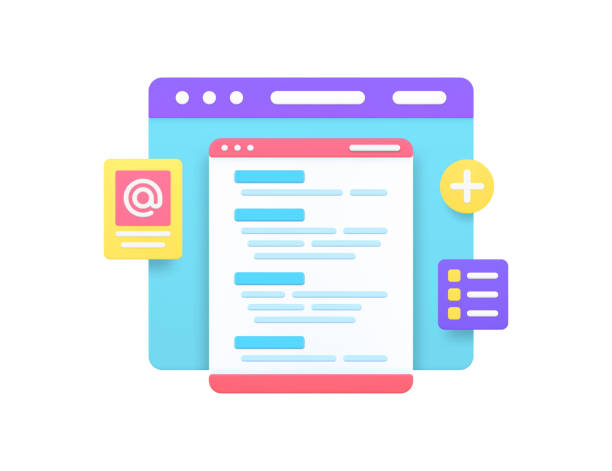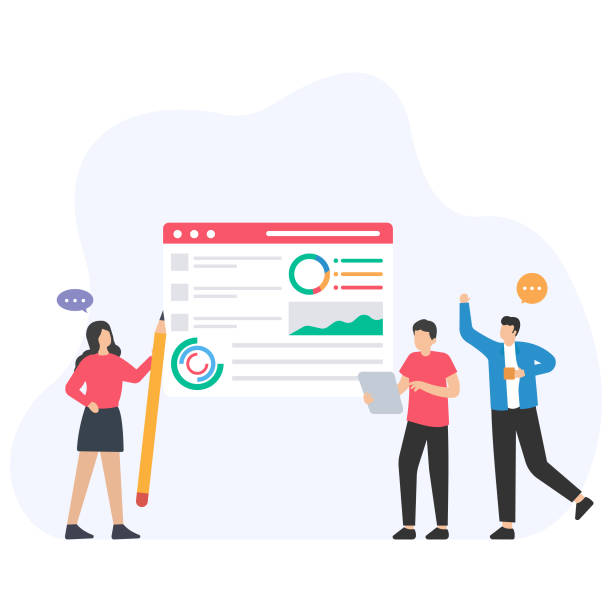The Importance of Multilingual Website Design in Today’s World
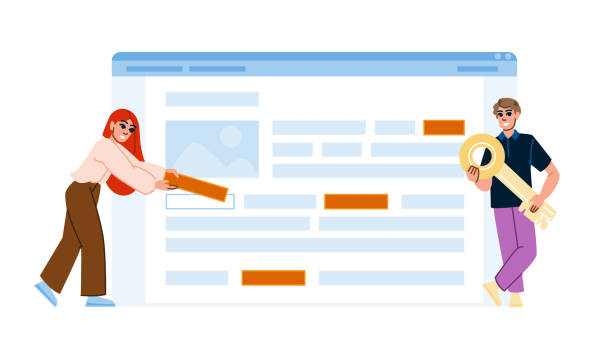
In today’s interconnected world, expanding online presence and accessing global markets has become more vital than ever.
#Multilingual_Website_Design is no longer a competitive advantage, but an unavoidable necessity for businesses seeking sustainable growth and development.
By being able to provide content in multiple languages, you open new doors to international audiences and create unparalleled opportunities for interaction and sales.
This approach not only attracts more audiences but also helps strengthen your brand image as a global and trustworthy entity.
Ignoring this aspect can mean losing a significant market share.
Imagine you have a product or service that can be used in different countries; without a multilingual website, a large portion of this potential remains undiscovered.
This importance is not limited to large companies; even small and medium-sized businesses can access new markets by investing in digital marketing and making their websites multilingual.
This explanatory approach highlights how globalization has changed web requirements and made multilingual presence a fundamental basis.
Optimizing a website for international audiences is not just about translation; it must involve a deep understanding of different cultures and market needs to provide a better user experience (UX).
Are you tired of your company’s website not meeting your expectations? With RasawB, design a professional website that truly represents your business.
✅ Increased acquisition of new customers and sales leads
✅ Increased credibility and trust in your brand among your audience
⚡ Get a free website design consultation!
Multiple Benefits of Having a Multilingual Website
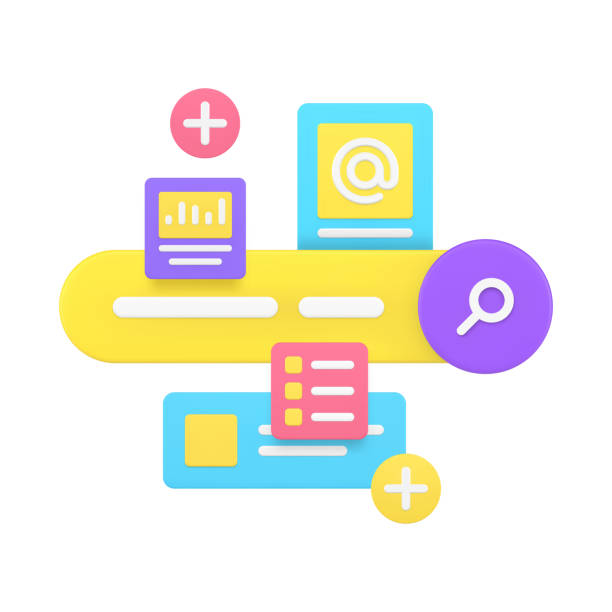
Having a website capable of being presented in different languages brings numerous benefits that go beyond simply reaching more audiences.
#International_SEO and improved user experience are among the most prominent of these benefits.
When users can find and read your content in their native language, they establish deeper trust and connection with your brand.
This directly impacts conversion rates and customer loyalty.
From an SEO perspective, search engines perceive multilingual websites as much more relevant for local users, which leads to improved rankings in international search results.
Using hreflang tags and an appropriate URL structure for each language are among the key techniques in this area.
This is a comprehensive analytical overview of how multilingual website design impacts business performance on a global scale.
Furthermore, multilingual websites allow you to localize your content for specific markets, which includes using local idioms, currencies, and measurement systems.
This level of localization significantly improves the user experience and gives visitors the feeling that the content was created specifically for them.
Competition in global markets is fierce, and every advantage can make a big difference.
Increased market access and reduced language barriers transform your website into a powerful tool for growth.
Precise Planning for Multilingual Website Design

Before any action for #Multilingual_Website_Design, comprehensive and precise planning is essential.
This stage involves deciding which languages you intend to translate your website into, a choice that should be based on target markets and analytical data.
Also, you need to define your content strategy for each language; will all content be translated or only specific sections? Cultural localization of content is also important at this stage to ensure your message is accurately conveyed to audiences in each region.
Choosing the appropriate URL structure (subdomain, subdirectory, or separate domain) and a content management system (CMS) that supports multilingual capabilities are crucial next steps.
This guidance helps you avoid potential confusion and provides a clear path for implementing your project.
Considering technical aspects such as implementing hreflang tags and ensuring compatibility with international SEO from the outset can reduce future costs.
| Factor | Description |
|---|---|
| Language Selection | Based on market research and target audiences. |
| Content Strategy | Determining the type and amount of translated and localized content. |
| URL Structure | Choosing between subdomain, subdirectory, or separate domain. |
| CMS Selection | A content management system that supports multilingual capabilities. |
| Cultural Localization | Adapting content to the cultural norms and values of each language. |
Consulting with website design specialists who have experience in multilingual website design can be very beneficial at this stage and help you make the best decisions.
Technical Aspects in Implementing a Multilingual Site
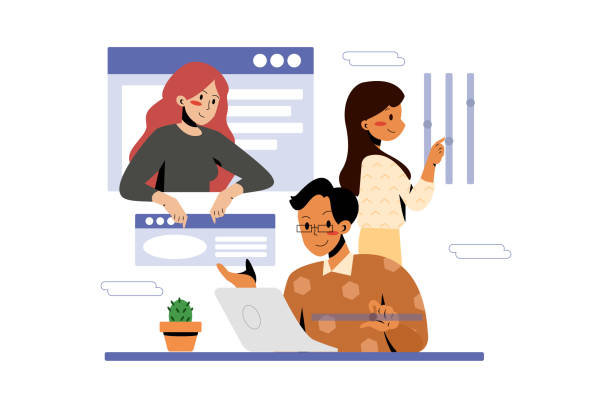
The technical implementation of #Multilingual_Website_Design requires a deep understanding of specific protocols and techniques to ensure your website is correctly indexed by search engines and provides a smooth user experience.
One of the most important aspects is the correct use of the `hreflang` tag, which tells search engines which version of the page is suitable for which language and geographical region.
These tags are crucial for preventing duplicate content issues and directing users to the correct language version.
Choosing the URL structure, whether using subdomains (like `fr.example.com`), subdirectories (like `example.com/fr/`), or country-code top-level domains (like `example.fr`), has a direct impact on your SEO strategy and must be chosen carefully.
Each has its own advantages and disadvantages that must be weighed against project goals.
This specialized section delves into the complex technical aspects necessary for the success of a multilingual website.
Additionally, the content management system (CMS) used must offer robust multilingual capabilities, including easy translation management, support for multilingual URLs, and the ability for website administrators to easily switch between languages.
Website loading speed for each language must also be optimized, as slow speeds can harm user experience and SEO ranking.
Adhering to Google’s guidelines for multilingual websites is of great importance.
Paying attention to small technical details can make a big difference in the performance and visibility of your website internationally.
Are you bothered by losing customers who visit your site to make a purchase?
RasawB is your specialized solution for having a successful online store.
✅ Significantly increase your online sales
✅ Build trust and professional branding among customers⚡ Get a free consultation from RasawB specialists!
Content Translation and Localization; Beyond Words
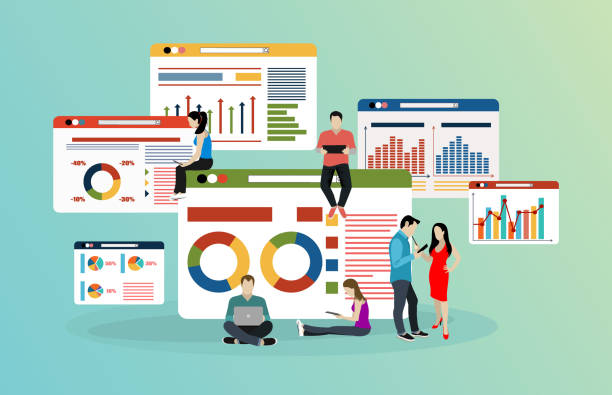
Success in #Multilingual_Website_Design is not limited to translating words from one language to another.
What truly makes a difference is content localization; a process where your content is adapted to the culture, local idioms, and even the social and legal norms of the target market.
For example, a joke or a colloquialism that is perfectly normal in one culture might be meaningless or even offensive in another.
Writing style, cultural references, units of measurement, and even colors and images must be carefully chosen to resonate with local audiences.
This educational section teaches you why localization is a crucial step and how you can avoid common mistakes.
Using native-speaking translators who are experts in your field and familiar with the target culture and market can significantly increase the quality of localized content.
Machine translation tools can be useful as a starting point, but they can never replace the nuances and cultural understanding of a human.
The quality of translation and localization directly impacts your brand’s credibility and user trust.
A poor translation can harm your brand and alienate your audience.
Therefore, investing in correct content localization is an investment in the future of your business in international markets.
This stage ensures that your multilingual website is not only understandable but also communicates effectively with its audience.
User Experience (UX) in Multilingual Websites

One of the most important aspects of #Multilingual_Website_Design is ensuring a flawless user experience (UX) for all users, regardless of their language.
This means that the website should be designed so that users can easily select their desired language and navigate within it.
Placing a language switcher in an accessible and visible location, such as the header or footer, is crucial.
Also, the design should be such that even after changing the language, the navigation structure, page layout, and overall site functionality remain consistent and predictable.
This guidance section helps you apply best practices in multilingual UX design.
Fonts, text direction (such as right-to-left for Persian or Arabic), and even the use of icons and images must be carefully selected to convey the correct meaning and display properly in every language and culture.
User testing with native speakers is a very important step to ensure the fluidity and intuitiveness of the user experience in each language.
Any ambiguity or difficulty in navigation can lead to site abandonment and loss of audience.
Remember that your website is the first point of contact for many users with your brand, so providing an excellent user experience in every language greatly helps create a positive and lasting impression.
Focusing on small details, such as ensuring that all translatable elements, like error messages or call-to-action buttons, are correctly translated, is also important.
An optimized UX directly contributes to the success of a multilingual website.
SEO Strategies for Multilingual Websites

SEO for a multilingual website has its own complexities and requires a different approach than single-language SEO.
#Search_Engine_Optimization at an international level includes aspects such as keyword research for each language and region, correct use of hreflang tags to direct search engines to the appropriate language version, and building a local link-building profile.
Translated content must also be optimized for local keywords, which may include translating keywords or finding local synonyms that are popular in that language.
This specialized section discusses strategies that help your website gain visibility in global markets.
Monitoring SEO performance in each geographical region and language, and adjusting the strategy based on data, is very important.
Web analytics tools like Google Analytics and Google Search Console can provide valuable data on how users interact with your website in different languages.
| Strategy | Description |
|---|---|
| Local Keyword Research | Finding popular keywords in each language and region. |
| Use of hreflang tag | Informing search engines of the language version of pages. |
| Appropriate URL Structure | Choosing subdomain, subdirectory, or TLD. |
| Local Link Building | Acquiring links from reputable local websites. |
| Website Loading Speed | Optimizing speed for users in different regions. |
Google’s guide to international targeting can be a useful resource.
Ultimately, multilingual SEO is an ongoing process that requires continuous updates and adaptation to algorithmic changes and market trends.
Common Challenges and Solutions in Multilingual Website Design
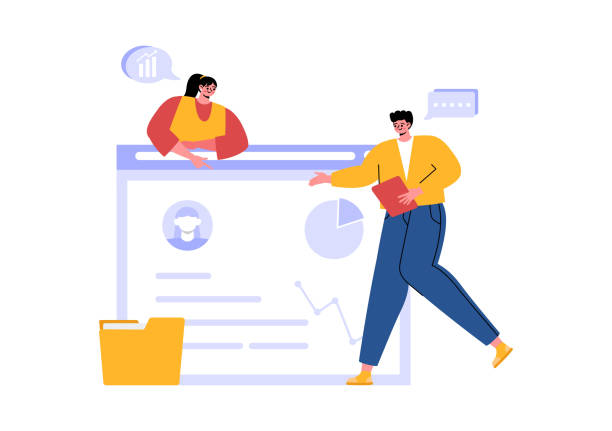
Although #Multilingual_Website_Design offers many benefits, its implementation and maintenance can come with challenges.
One of the biggest challenges is ensuring the quality and consistency of translations over time.
Website content is constantly changing and being updated, and ensuring that all language versions remain up-to-date and consistent requires a strong translation management process.
Another challenge is the technical aspects related to SEO and preventing duplicate content, which must be carefully managed through hreflang tags and appropriate URL structure.
Also, you may encounter issues related to fonts, date and time formatting, and even currency in different languages.
This thought-provoking content helps you reflect on these challenges and prepare for them.
Appropriate budgeting for translation and maintenance is also of high importance.
Solutions such as using Translation Management Systems (TMS), employing professional native-speaking translators, and utilizing multilingual plugins and tools in a CMS can help address these challenges.
Furthermore, establishing an internal or external team specialized in localization and international SEO can ensure quality and sustained success.
Regular maintenance and monitoring of website performance in each language help identify and resolve potential issues in the early stages.
Every challenge is an opportunity to learn and improve processes.
Are you frustrated by your e-commerce site’s low conversion rate? RasawB transforms your online store into a powerful tool for attracting and converting customers!
✅ Significantly increase your visitor-to-buyer conversion rate
✅ Unparalleled user experience to boost customer satisfaction and loyalty⚡ Get a free consultation from RasawB!
Useful Tools and Platforms for Multilingual Websites

Choosing the right tools and platforms plays a vital role in the success of #Multilingual_Website_Design.
Today, many Content Management Systems (CMS) support multilingual capabilities, simplifying the translation and content management process.
WordPress, with plugins like WPML or Polylang, Drupal, and Joomla are among the most popular options, offering extensive features for managing different languages.
Additionally, e-commerce platforms like Shopify and Magento also provide multilingual capabilities for online stores.
This news section introduces some of these tools.
Besides CMS, AI-powered automatic translation tools (such as Google Translate API or DeepL) can be used in initial stages or for non-sensitive content, although for critical and culturally sensitive content, human translation and localization are always required.
Project management tools and Translation Management Systems (TMS) are also very useful for coordinating the translation process among different teams and maintaining content consistency.
Choosing the right tools should be based on the specific project needs, budget, and capabilities of your technical team.
Thorough research and comparison before making a final decision can prevent future problems and help you create a strong infrastructure for your multilingual website.
With the right tools, the process of designing and maintaining a multilingual website will be much more efficient and less challenging.
Future Trends and Conclusion on Multilingual Website Design
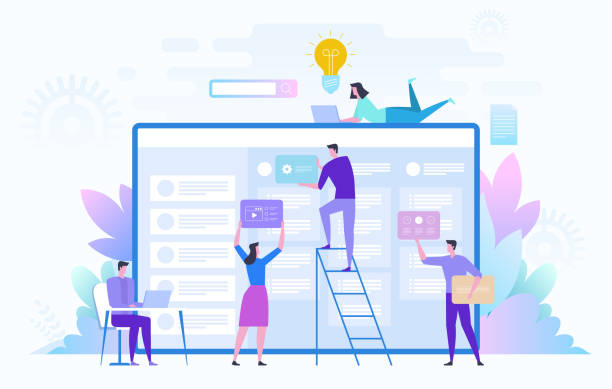
The world of the web is constantly evolving, and #Multilingual_Website_Design is no exception.
Emerging trends such as the use of AI in content translation and localization, multilingual voice search, and the need for Continuous Localization indicate the future of this field.
AI can help increase the speed and efficiency of the translation process, although the need for human review and editing to maintain quality and cultural accuracy remains.
Voice search, which is currently growing, requires content optimization for conversational queries in different languages.
This entertaining section predicts future trends.
Ultimately, designing and maintaining a multilingual website is a dynamic and continuous process.
To succeed in global markets, businesses must continuously update their websites and adapt to the needs and expectations of international audiences.
Investing in multilingual website design means investing in sustainable growth and access to endless global opportunities.
This action not only helps increase audience and sales but also strengthens your brand’s position as a global and forward-thinking entity.
By deeply understanding the importance, challenges, and opportunities of multilingual website design, you can take effective steps to expand your online presence worldwide and access new and lucrative markets.
Frequently Asked Questions
| Question | Answer |
|---|---|
| What is a multilingual website? | It is a website whose content is available to users in several different languages. |
| Why should we design a multilingual website? | To expand access to international audiences, increase site traffic, improve SEO in target markets, and provide a better user experience for non-Persian speaking users. |
| What are the main methods for implementing a multilingual website? | Using subdomains (e.g., en.mysite.com), using subdirectories (e.g., mysite.com/en/), and using separate domains for each language (e.g., mysite.com and mysite.de). |
| Which implementation method is better for SEO? | Generally, using subdirectories (language folder) is often recommended due to the transfer of main domain authority to other languages. |
| What is the Hreflang tag and what is its use? | It is an HTML tag or HTTP Header that tells search engines which version of a page is suitable for which language or geographical region. This tag prevents Duplicate Content and improves SEO. |
| How is a Language Switcher designed? | Usually by using a dropdown menu, button, or flag in the site’s header or footer, which allows the user to select their preferred language. |
| Is automatic (machine) translation suitable for a multilingual website? | No, machine translation usually has low quality and many errors that can harm the site’s credibility. Human translation or a combination of human translation and machine editing is recommended. |
| What are the most important SEO tips in multilingual website design? | Correct use of the Hreflang tag, having an appropriate URL structure for each language, translating meta titles and descriptions, translating main content, internal linking between related language versions. |
| Should all website content be translated? | It depends on the strategy. Usually, the main and important content of the site should be translated. Less important sections or blogs may not require full translation. |
| What are the main challenges in multilingual website design? | Content management in different languages, translation costs, technical issues related to URLs and language tags, template compatibility with right-to-left (RTL) languages like Persian and Arabic, and managing multilingual SEO. |
And other advertising services by Rasa Web advertising agency
Smart Advertising Campaign: A fast and efficient solution for customer behavior analysis focusing on marketing automation.
Smart Digital Branding: A fast and efficient solution for increasing sales, focusing on optimizing key pages.
Smart Content Strategy: Professional optimization for customer behavior analysis using user experience customization.
Smart Social Media: An innovative service for enhancing customer behavior analysis through intelligent data analysis.
Smart Marketing Automation: Revolutionize website traffic with the help of real data.
And over hundreds of other services in internet advertising, advertising consultation, and organizational solutions
Internet Advertising | Advertising Strategy | Advertorials
Sources
Benefits of Multilingual Websites Global Marketing Strategies How to Design a Global Website International SEO Basics
? RasawB Afarin Digital Marketing Agency, your strategic partner on the path to online brilliance! With services such as professional SEO, social media management, and multilingual website design, we guarantee a powerful and impactful online presence for your business. Contact us today and build the digital future of your business.
📍 Tehran, Mirdamad Street, Next to Central Bank, Southern Kazeroun Alley, Ramin Alley, No. 6

